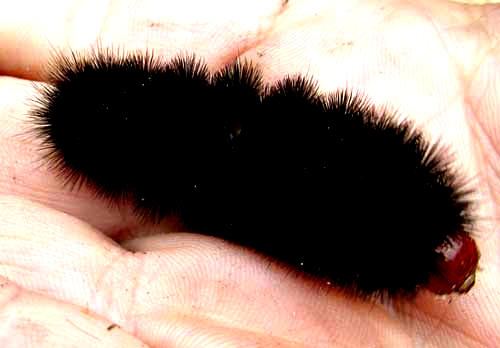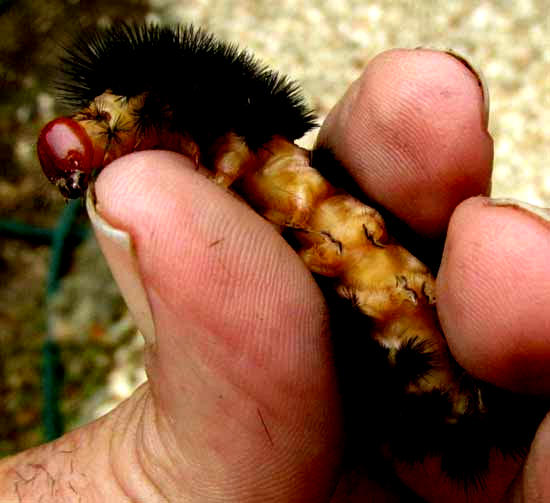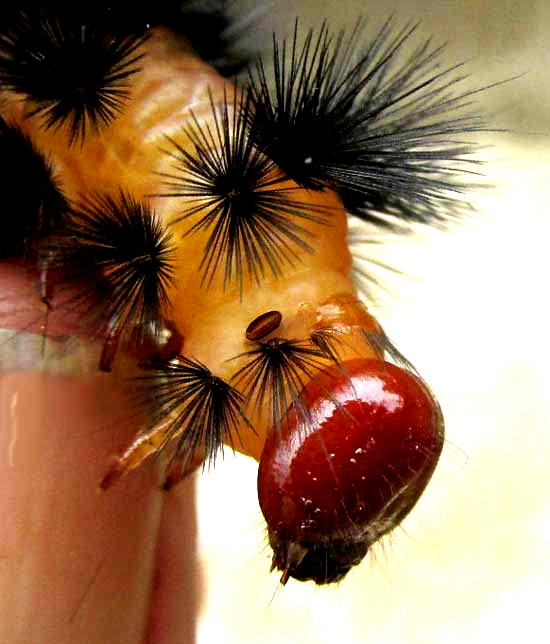Excerpts from Jim Conrad's
Naturalist Newsletter
from the March 13, 2016 Newsletter issued from Hacienda Chichen Resort beside Chichén Itzá Ruins; limestone bedrock; elevation ~39m (~128ft), N20.675°, W88.569°; central Yucatán state, MÉXICO
GIANT WOOLLY BEAR CATERPILLAR
I like to provide habitat information for caterpillars described here, but in this case I hesitate. However, I must be true to form, so I'll tell you that on a recent morning at about 4AM I hiked through the darkness to the Hacienda's bathrooms, chose a stall, dropped my pants, sat down, and there the caterpillar was on my naked leg. I can only guess that during the night he'd taken shelter in my shorts hung beside the mosquito net and that somehow he'd survived my dressing, walking, undressing and sitting. Below, you can see him on my hand once the sun came up:

He's so hairy with stiff, sharp but non-stinging spines that you wonder how he gets around. Of course on his underside he's not hairy at all, as shown below:

The hair clumps spiky nature is better seen below:
<
The above photos went off to volunteer insect identifier Bea in Ontario, who quickly decided that it looked a lot like a Leopard Moth caterpillar, which occurs in the Yucatan. However, Bea also pointed out that pictures on the Internet show vibrant reddish-orange stripes crossing the caterpillar's back, while our individual lacks such marks. But notice in that last picture that right behind the first row of bristles behind the head there's a hint of a dark band, so maybe that's the beginning of a red marking. I suspect that our individual is an immature caterpillar -- one yet to molt into its final " instar." I think Bea got it right again.
*UPDATE: In 2025 many more identification resources are available on the Internet than when we tried to ID this caterpillar in 2016. After I'd uploaded our pictures to iNaturalist, in 2025 user "darlingbeetle" an iNaturalist curator specializing in moths, said our caterpillar looks more like a member of the genus Ammalo, a kind of Tiger Moth, and with this information and various new sources on the Internet, now to me this looks like AMMALO HELOPS, with no English name other than "some kind of Tiger Moth, Tribe Artiini.
Ammalo helops is distributed throughout most of central and southern Mexico, and Central and South America. I read that the species feeds mostly on species of the Fig Family but has been noted on the Dogbane/Milkweed Familly, and of course lots of strangler figs occur at Chichén Itzá, and milkweeds also are present.